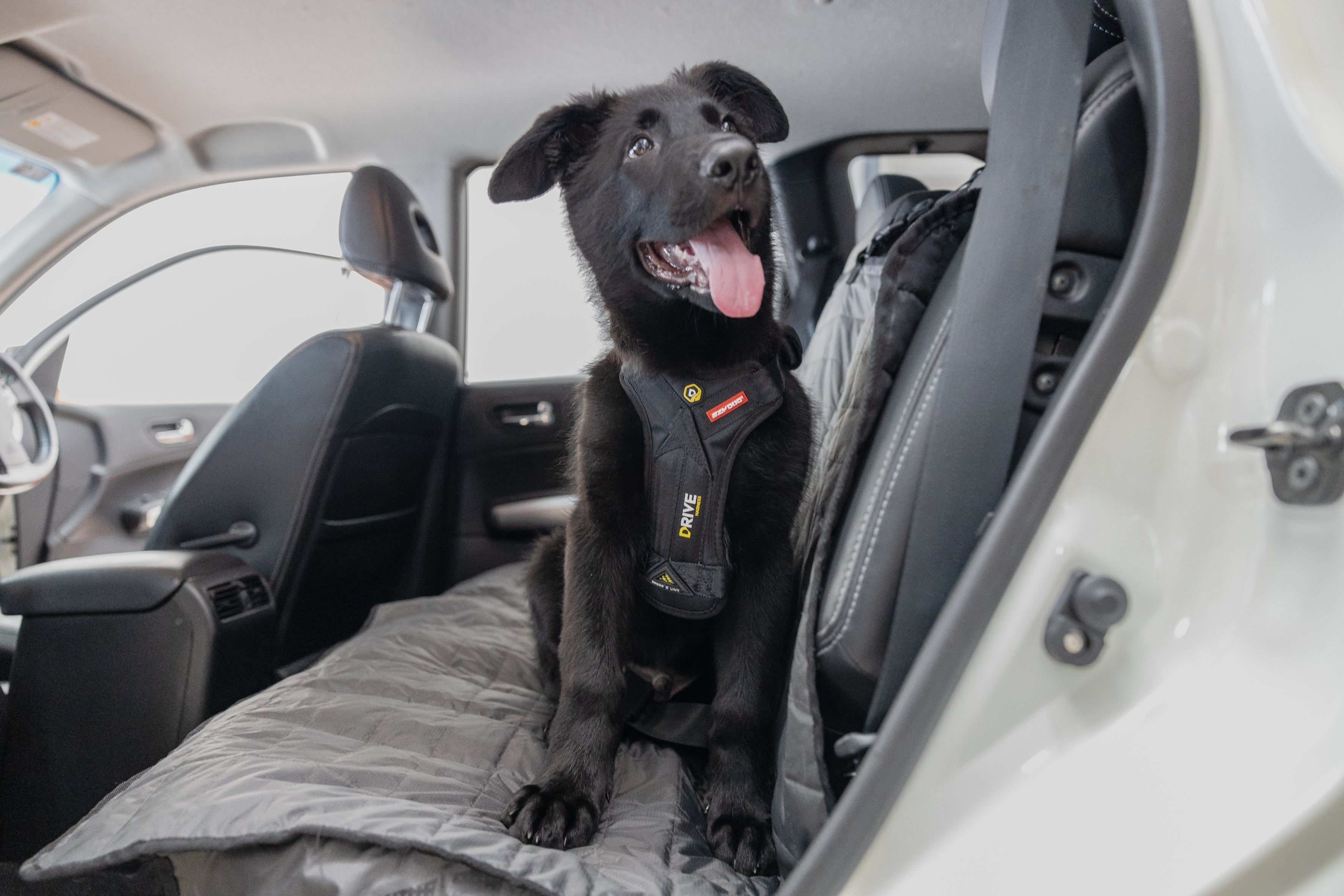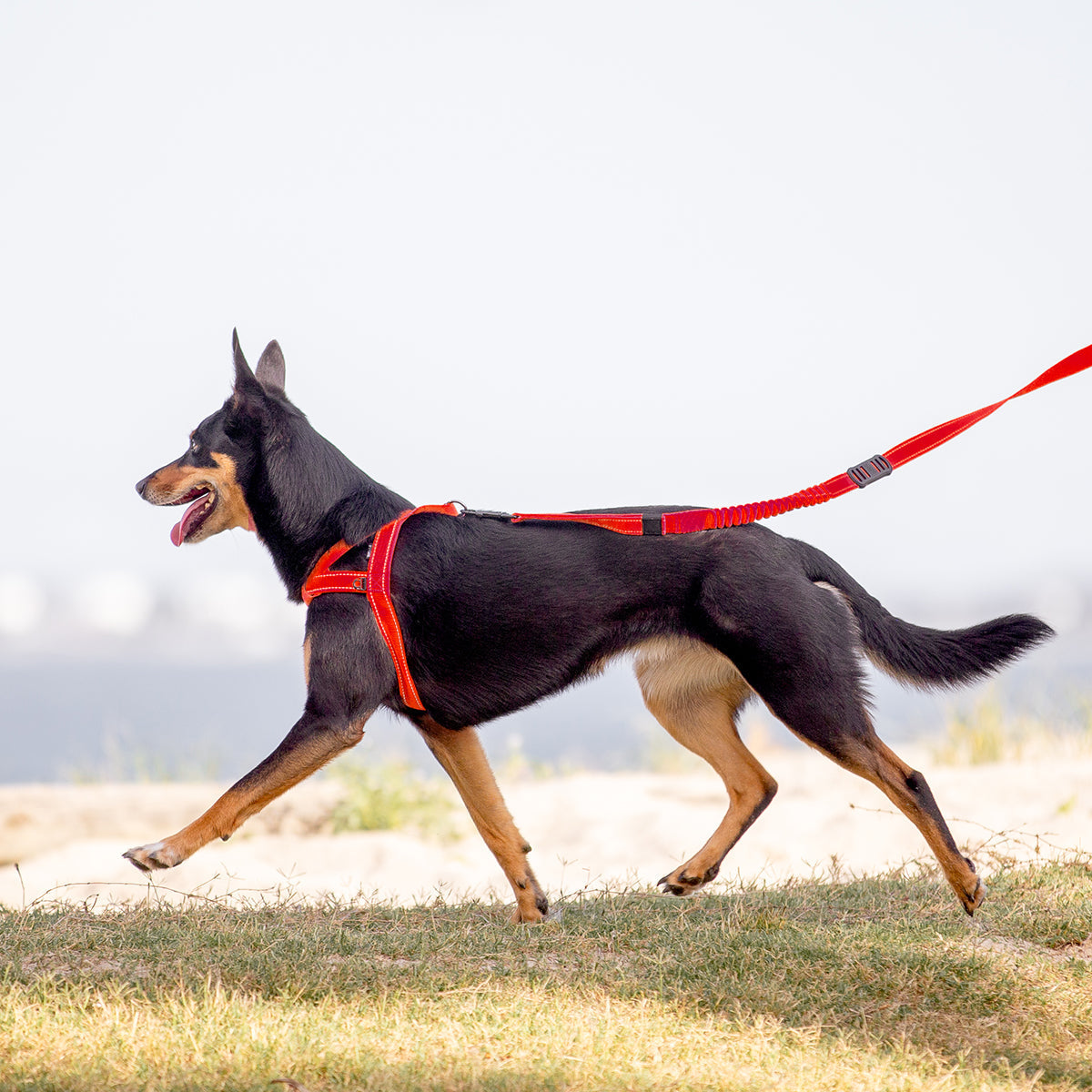
How To Choose The Best Dog Car Safety Harness (Crash-Tested & Reviewed)
Car rides with your dog should be fun, not risky. Whether it's a short trip to the park or a long road journey, keeping your dog secure in the car is essential for their safety and your peace of mind. A car safety harness isn't just a leash substitute – it's a restraint system designed to protect your dog in the event of sudden braking or impact.
In this expert guide, we’ll walk you through everything you need to know before buying a dog car safety harness – from crash-tested picks to proper fitment and positioning tips. If you're serious about protecting your pet, this guide is for you.
Why Dog Car Safety Matters
Just like humans, dogs can be seriously injured in car accidents or even during hard stops. A loose dog in the car can:
-
Become a projectile, risking injury to themselves and others.
-
Cause driver distraction, increasing accident risk.
-
Escape in the event of a crash or open door.
-
Suffer neck or spine injuries if restrained by a collar.
A well-fitted dog car harness helps reduce these risks while keeping your dog comfortably in place.
What Makes a Good Dog Car Harness?
Not all harnesses are suitable for car travel. Look for these must-have features:
Crash-Tested Design
Only use harnesses tested to withstand impact forces. Some models meet or exceed standards like the Federal Motor Vehicle Safety Standard (FMVSS) 213 in the US or equivalent European safety standards.
Harness, Not a Collar
A proper car harness should wrap around the dog's chest and shoulders, never attach to the collar. This reduces the risk of neck injury during a sudden stop.
Compatibility with Seat Belts
Choose harnesses with built-in loops or attachments that work with standard seatbelt systems or anchor points.
Padded and Comfortable
Since your dog may wear the harness for hours during travel, ensure it's padded and breathable for comfort.
Easy On-Off
Look for quick-release buckles or step-in designs that make it easy to fit without a struggle.
Comparison Table: Dog Car Harness Types
|
Harness Type |
Best For |
Crash Tested |
Restraint Style |
Comfort Level |
|
Drive Harness |
Large/medium breeds, frequent travel |
Yes |
Seatbelt loop + buckle |
High |
|
Basic Harness + Seatbelt Clip |
Short trips, low pullers |
No (unless specified) |
Clip-on to D-ring |
Moderate |
|
Dual-Purpose Walking & Car Harness |
Everyday use + car |
Varies |
Seatbelt loop |
Moderate-High |
Best Dog Car Safety Harnesses (2025)
Drive Car Harness
Crash-tested, ergonomically padded, and built with vehicle-grade materials. Ideal for dogs who ride often or travel long distances.
-
Certified crash-tested
-
Steel hardware and padded chest panel
-
Easy slide adjusters for a snug fit
Click Seat Belt Restraint
While not a harness itself, this accessory is designed to pair with any harness to keep your dog anchored to your car’s seatbelt system.
-
Compatible with all standard seat belts
-
Adjustable length
-
Best used with padded harnesses like the Drive Harness
Convert Harness
A rugged harness with car compatibility via additional accessories. Best for large, working, or outdoor dogs.
-
Durable construction
-
Side label area for ID or patches
-
Comfortable enough for daily walks too
How to Fit a Car Safety Harness Properly
-
Measure your dog before purchase using a soft tape measure around the neck and chest. Refer to EzyDog’s Size Guide.
-
Adjust straps so that the harness fits snugly but not tightly.
-
The chest plate should sit low on the sternum, not up by the throat.
-
Double-check all buckles and sliders before travel.
-
Test it inside a parked car before your first drive.
Tips for Securing Your Dog in the Car
-
Use the back seat: Airbags in the front seat can injure dogs in crashes.
-
Limit movement: A proper harness should restrict roaming while allowing sitting or lying down.
-
Never attach to a collar: Always use a crash-rated harness that spreads force across the body.
-
Avoid long leads: Too much slack increases the risk of entanglement or ejection.
-
Use car seat covers for extra grip and seat protection (See seat covers).
Car Harness vs Crate: Which is Safer?
A secured crate is ideal for large SUVs or vans and offers impact protection when crash-tested. However, most cars don't have space. Harnesses are more practical and effective for most everyday vehicles.
|
Restraint Type |
Pros |
Cons |
|
Car Harness |
Portable, easy to use, works in any vehicle |
May not protect as well as a solid crate |
|
Crate (Crash-Tested) |
Superior impact protection |
Bulky, not always compatible with cars |
FAQs:
1. What is the safest car harness for dogs?
The safest dog car harness is one that has been crash-tested and approved for car travel, like the EzyDog Drive Harness. Look for harnesses that are adjustable, padded, and meet safety standards for restraint systems.
2. Are harnesses safer than collars?
Yes, harnesses are much safer than collars in the car. A harness distributes force across the chest and shoulders, reducing the risk of injury to the neck or spine during sudden stops.
3. Are dog car seat belts OK?
Yes, but only when used with a crash-tested harness. Attaching a seat belt to a collar is dangerous. Always use seat belts with harnesses specifically designed for car safety.
4. Is a seatbelt better than a crate for a dog?
For most short to medium trips, a crash-tested harness with a seatbelt is safer and more practical than a crate. Crates should be crash-tested and secured properly if used.
5. How can I secure my dog in the backseat of my car?
Use a car safety harness with a seatbelt attachment or a dog travel seat. Make sure the dog is restrained to prevent them from roaming or becoming a distraction while driving.
6. Can I use my dog’s regular harness with a seatbelt?
No, standard walking harnesses are not designed for car safety. Only use harnesses that are labelled as crash-tested or vehicle approved.
7. Do crash-tested dog harnesses really work?
Yes, crash-tested dog harnesses are designed to withstand impact and keep your dog restrained in the event of a sudden stop or crash. Always check for official safety test results when buying one.
8. Should dogs be in the front or back seat of the car?
Dogs should always travel in the back seat for safety. The front seat airbags can cause serious injury in an accident, even for restrained dogs.
9. What is the best way to restrain a dog in a car?
The best way is with a crash-tested car safety harness that connects to the seatbelt system. It prevents movement while keeping your dog secure and comfortable.
10. Where is the best place to put a dog in the car?
The back seat is safest. Use a restraint system such as a car harness or crate and keep your dog away from airbags and driver distraction.
Final Thoughts
Investing in a proper dog car safety harness is one of the most responsible things you can do as a pet owner. Not only does it protect your dog in emergencies, but it also keeps the road safer for everyone.
For ultimate peace of mind and real crash-tested reliability, explore the Drive Car Harness and dog car restraint collection from EzyDog NZ – built for safety, comfort, and everyday travel.
Reviewed by Experts
This post has been quality-checked by SEO Expert Niraj Raut to ensure it’s clear, helpful, and accurate, and fact-checked by Ken, a dedicated dog expert and enthusiast, to guarantee reliable information for dog owners.



Leave a comment
This site is protected by hCaptcha and the hCaptcha Privacy Policy and Terms of Service apply.